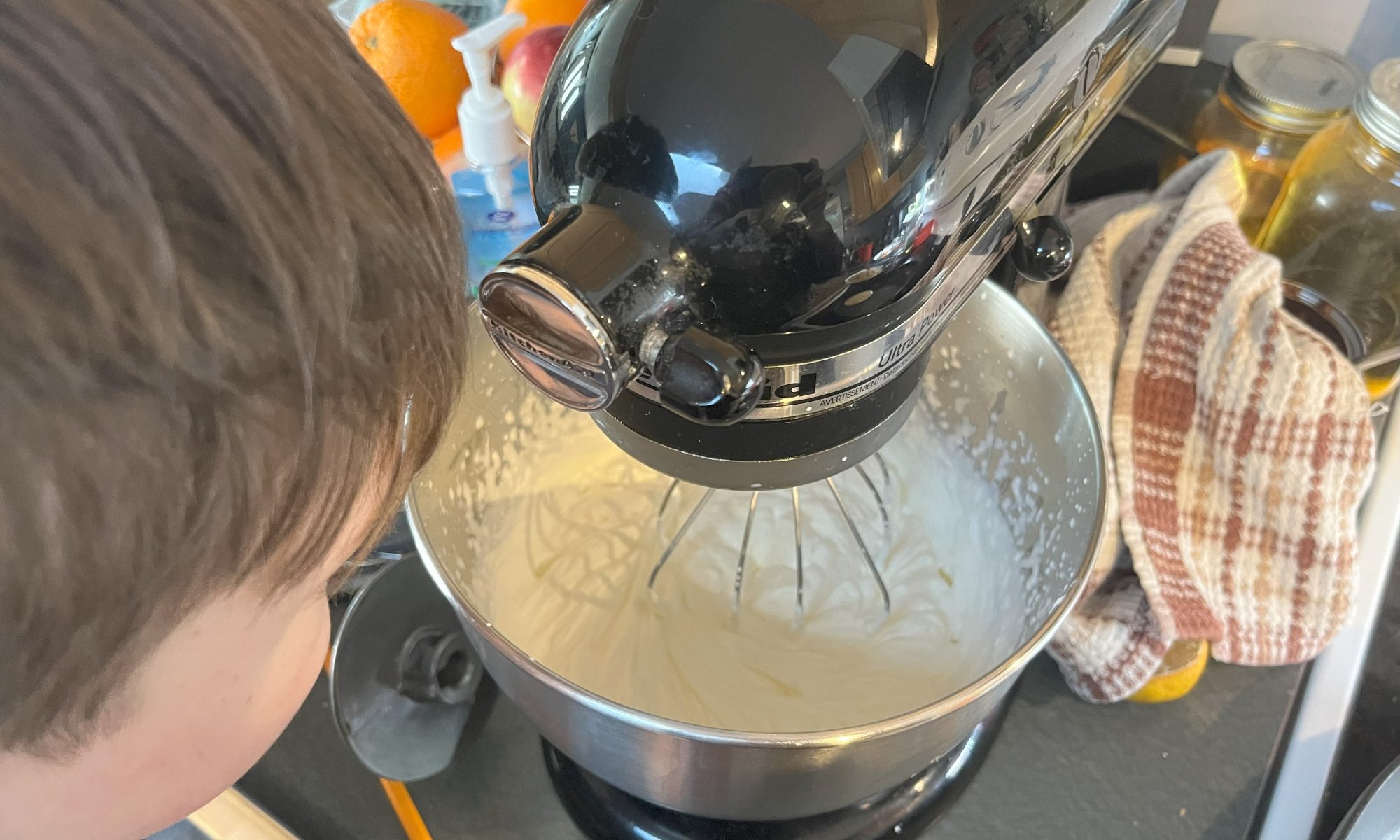When I was young, my grandfather tried to gut a jackfish in front of my sister and me. The reaction he got from us was biblical – crying, screaming, the whole thing. Before long he gave up, placed Jack back in the pail of water he’d come up in, and let us watch as he swam away unharmed. My squeamishness that day is regularly brought up at family gatherings where everyone reinforces what a wimp I am. (It’s been 35 years, I think the horse is dead…) It has taken me until my 40th birthday to realize that I’m really not squeamish in most situations. What happened that day was a reflection of my lack of exposure to things in life that would bolster my resilience when faced with something new.
Years Later
At my house, my mother was so allergic to almost all animals that my exposure to them was essentially nil. No shit – I had to strip down in our attached garage and immediately launder everything I wore if I had stepped foot in a friend’s home. And it wasn’t just my mom that stood between me and animals, either. Once, we got an opportunity to ride some horses at a family member’s acreage, but the fun was immediately cut short because my sister’s face and eyes were swelling.
At that age, who could fault me for not being able to pet a dog comfortably – let alone gut a fish? Gradually, I began to see my lack of understanding of animals extended to the flora around me, too. I had moved to a beautiful coastal town in 2020 and the exposure to all the lush green rainforests around me called at me to do, learn, and experience more. So, I did what any sane person would do and went directly into my fears to face them head-on. I started a huge garden, learned to filet fresh salmon out of the river (H is best at this), and got a dog. I washed chicken eggs, sewed boat covers, homeschooled, and found friends who wanted to live the same way.
Now that my children are old enough to understand, I want to imbue them with as much knowledge about the nature of our earth as I can. I don’t want them to be young adults who can’t identify all the vegetables at the grocery store – you know, the ones who are 40 and still putting ranch on every damn thing?
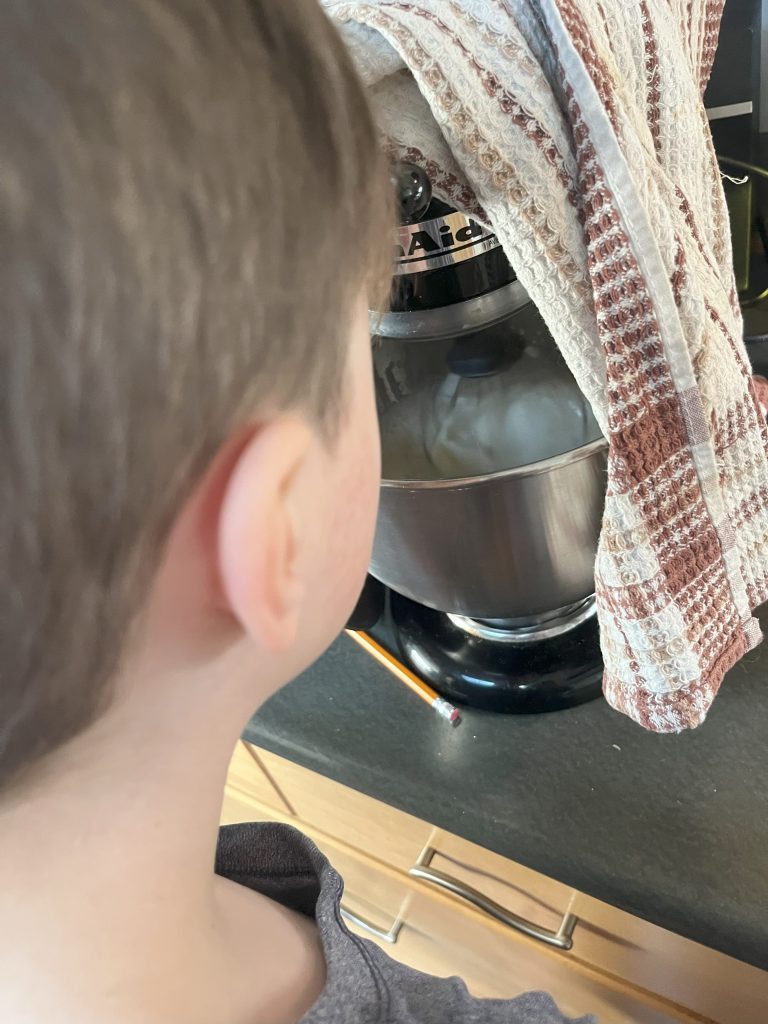
I want my kids to understand where food comes from and how it goes back to the earth in a cycle that supports all life. I want them to understand more of the world in general. So, where should I begin? I searched my memory basket and remember making churned butter in a Mason jar as a small child (and wondering if it would ever end). It’s easy, inexpensive, and provides lots of opportunities to discuss how this important resource was made in the past. This would be perfect.
Churned Butter
- Start by purchasing 2 cups of whipping cream. Any attempt to use a low-fat alternative here will fail!
- Let your whipping cream come to room temperature before pouring it into your mason jar or stand mixer. (I took pity on my little guy and we used the stand mixer).
- Start your stand mixer on low and gradually increase the speed until just before the cream splatters and makes a mess. Place a tea towel over the mixing machine to catch any splatter that does occur.
- Continue to run your mixer this way until it forms a thick whipped cream.
- After taking a mandatory sampling or two of your whipped cream, turn the mixer up again and keep churning the butter until it splits into what looks like butter and cloudy water (this “water” is buttermilk).
- Pick your butter up and run cold water over it butter as you knead it into a ball
- If you want to salt your churned butter, sprinkle some in now. If you want to add herbs and seasonings, click here for a few ideas.
- Reserve the buttermilk to get the most out of your whipping cream!
- Click here to see butter churning in action.
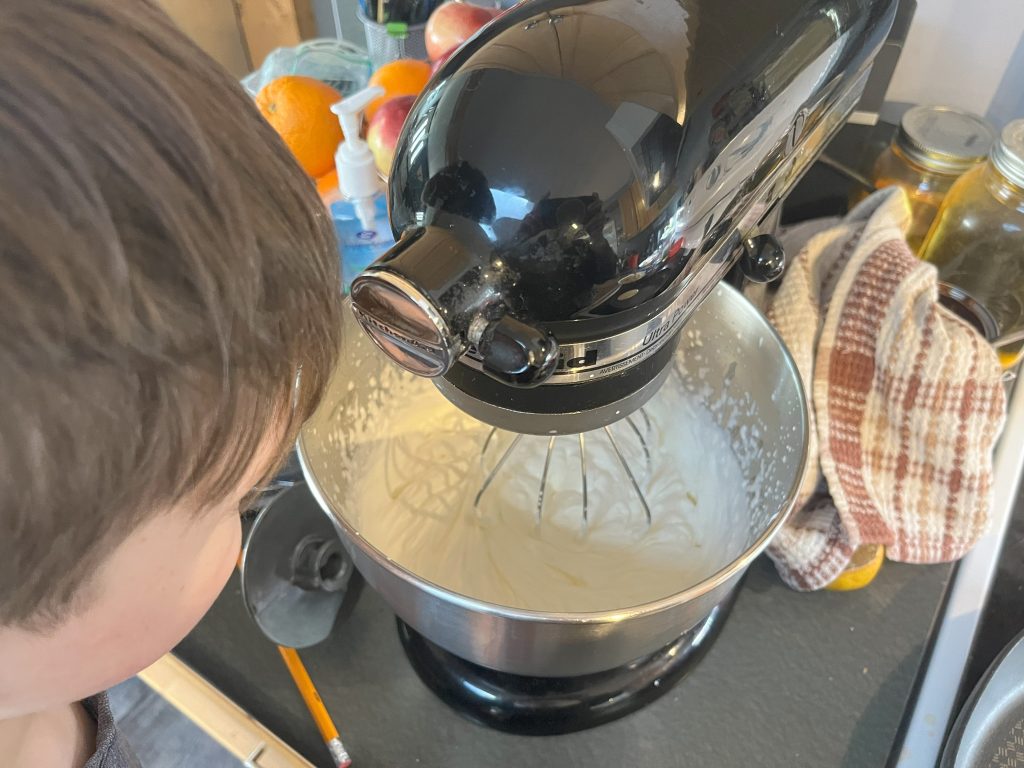
Why Churned Butter at Home is Better
- You control the quality of the butter by using quality ingredients
- You get access to the freshest product (especially when you make small batches regularly)
- Education – your child learns more about traditional foods and how they are made
- It’s easy and fun!
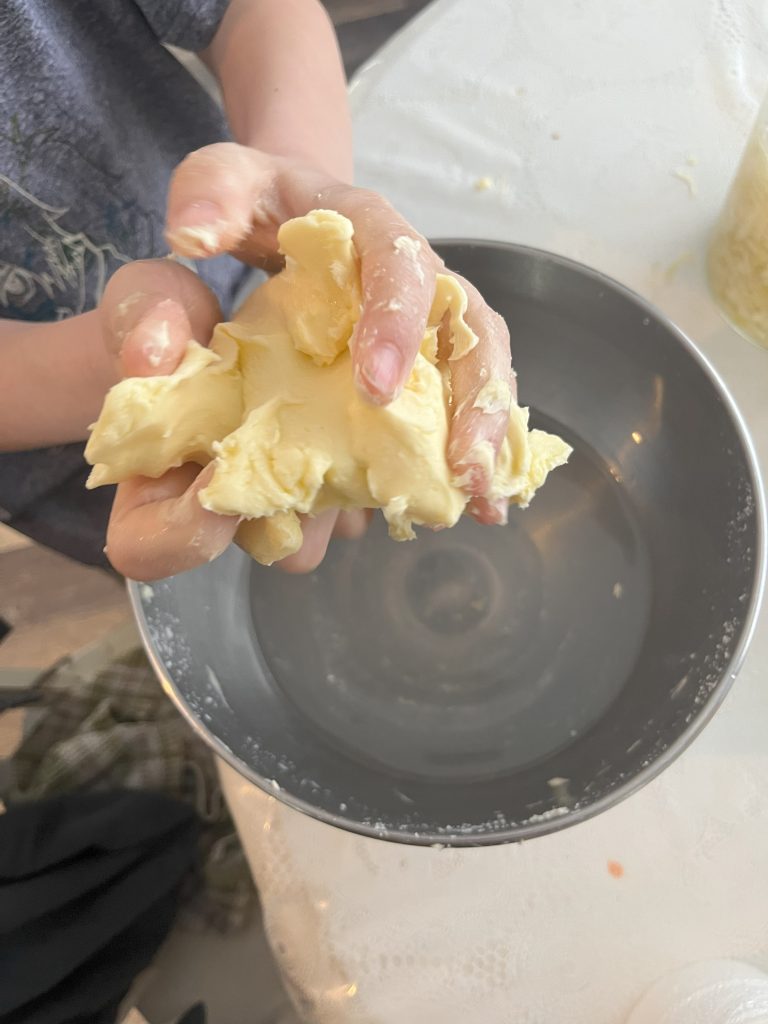
Using Your Leftover Weigh
You’ve just made your first batch of home churned butter! Now you can turn your attention to that leftover weigh you set aside when it separated. Although the possibilities are endless, we love to use it in these buttermilk pancakes. For other ideas of what can be done with your leftover buttermilk, check out this list.
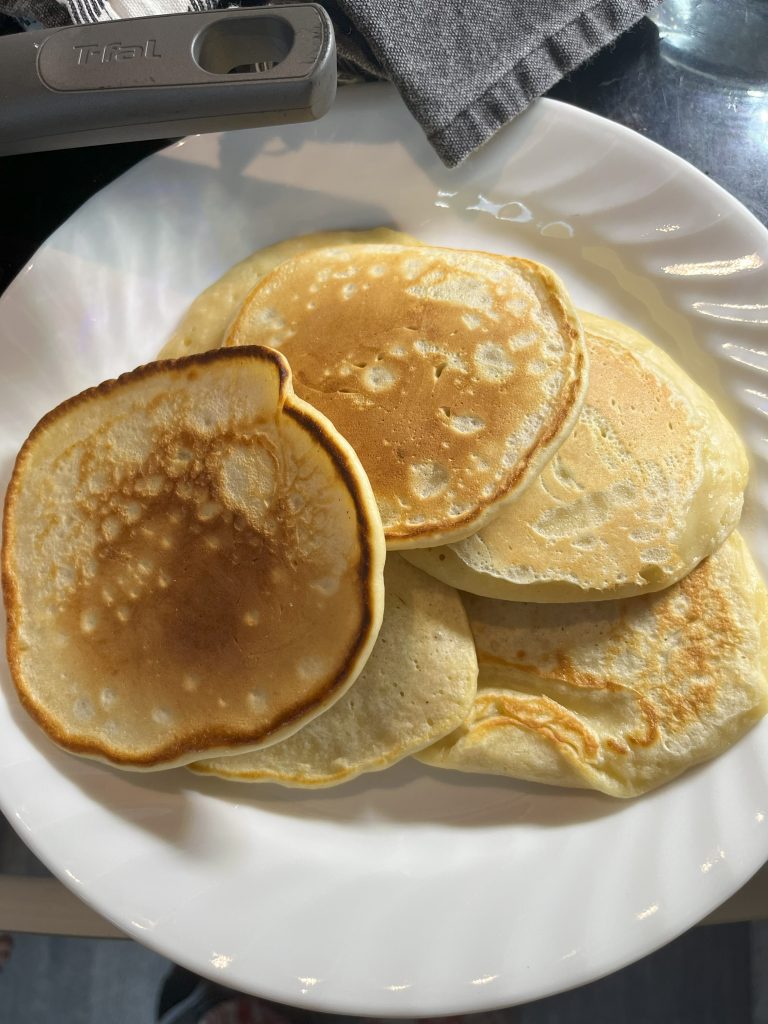
It’s Not Just Butter
Teaching children about traditional food practices is not just about imparting culinary skills; it’s about instilling a deeper connection to the environment and the sources of our sustenance. In today’s fast-paced world, where convenience often trumps authenticity, taking the time to churn butter with your children becomes more than just a kitchen activity – it becomes a lesson in heritage, sustainability, and self-reliance.
It’s Connection
By engaging in activities like butter churning, children gain a firsthand understanding of the effort and care that goes into producing food. They learn that food doesn’t magically appear on grocery store shelves; it has a journey, from farm to table. This awareness fosters appreciation and respect for the resources that nourish us, encouraging a more mindful approach to consumption.
It’s Cultural Preservation
Teaching children traditional food practices is a form of cultural preservation. In an era dominated by processed foods and fast food chains, these age-old techniques are at risk of being lost. By passing down these skills to the next generation, we ensure that our culinary heritage endures, keeping alive the flavors and traditions of our ancestors.
It’s Discovery
Beyond the kitchen, understanding the origins of food also sparks curiosity about the natural world. Children who begin with tasks like churning butter may develop an interest in agriculture, animal husbandry, or environmental stewardship. They may start asking questions about where their vegetables come from or how different animals contribute to the ecosystem, setting them on a path of discovery and exploration.
In essence, teaching children to churn butter is about more than just making a delicious spread; it’s about sowing the seeds of knowledge, curiosity, and appreciation. It’s about equipping them with the skills and insights they need to make informed choices about the food they eat and the world they inhabit. So, the next time you reach for that store-bought butter, consider taking a step back in time and inviting your children to join you in a journey of discovery through the simple act of churning.


